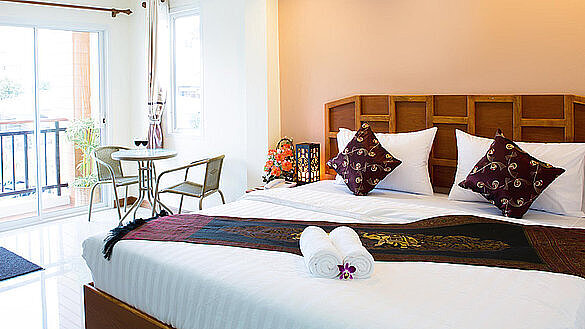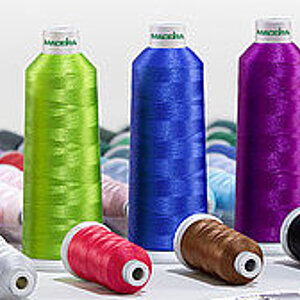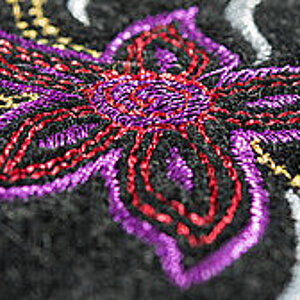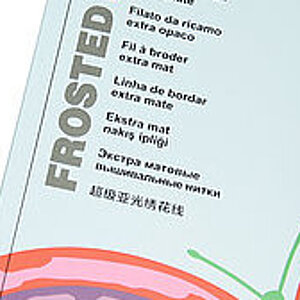When to use viscose and when to use polyester machine embroidery threads
Various types of machine embroidery threads are offered on the market. The ones used most commonly are produced from viscose or polyester. However, in-depth information that helps in understanding the features and limitations of each is often difficult to find. For this reason, we have created the following quick andpractical guide. Learn about the similarities and differences between polyester and viscose machine embroidery threads and for which application each is best suited for.
Why are there multiple types of embroidery threads?
Multiple thread types exist because of various requirements regarding the embroidery’s appearance and feel, the manufacturing processes, the maintenance and usage of the textile goods, costs and productivity, environmental impact, and quality.
You might already have a personal preference based on previous experience with embroidering with certain threads. And you might have noticed that one type of thread is not quite the best match for every embellishment.
The versions used the most, viscose and polyester embroidery threads, each have their strengths and limitations and therefore are the best choices for different type of projects.
Often, either of these threads could be enough when embroidering a standard design, but you should recognise when to use one type and when the other.
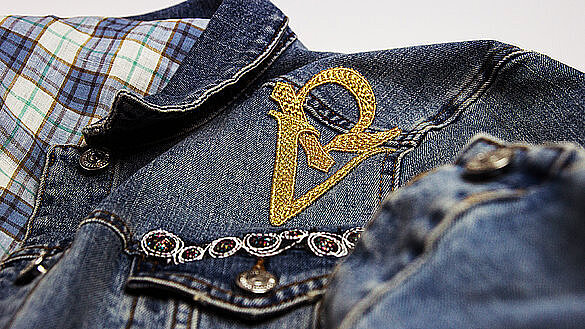
Raw materials and the environmental impact: how important are they for your choice?
The two threads have different origins. Viscose products were developed to behave like an artificial silk, providing affordable natural features and an amazing softness and shine. Their source is in nature. However, they are considered to be semi-synthetic: they are obtained from the wood of certain trees and the cellulose pulp is processed chemically into a viscous organic solution from which the threads are then obtained.
In the best case, the raw materials come from certified forests that are responsibly managed environmentally, socially and economically, like in the case of Madeira Classic.
Polyester threads are synthetic, man-made products obtained from oil. They were developed especially for endurance and resistance to chemical processing, which might be needed for cleaning or design purposes. They also offer price convenience. They are the best choice for embellishing goods that require such properties.
When you decide for polyester, choose brands that are produced in certified factories that save resources (e.g. water, electricity) and use them efficiently, as done for the manufacturing of Madeira Polyneon.
What kind of shiny appearance is needed for your design?
The two thread types are not made in the same way. Therefore, even though both are very shiny, they offer a slightly different appearance. Viscose thread unfolds in the light with an enchanting, silky and subtle sheen. Polyester has a strong, more straightforward shine.
If you aim to add multidimensionality and depth to designs, or to create shimmer effects, then viscose threads will best support those purposes. This feature might be interesting for some fashion and home decoration applications. Different decorative and shadowing possibilities are achieved with the type of stitches used and their direction. These have an impact on the aspect of each element contained in an embroidered design.
If light effects do not play a main role in the design, then either polyester or rayon will work well.
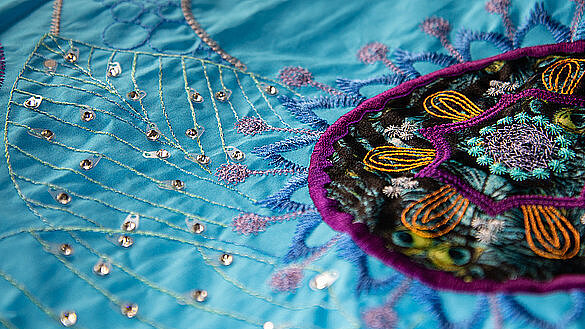
What kind of feel should your embroidery have?
Another difference between the two threads lies in their softness. Viscose threads are flexible and perform well in intricate designs or designs with numerous or dense stitches. They are gentle with the components of the embroidery machine they come in contact with and cause low friction and no residues. The designs will be pleasant to the touch, clear, precise and skin-friendly. Polyester threads have a harder touch, run a bit stiffer and feel a bit heavier, which makes them very suitable for harder materials and robust applications.
Viscose threads generally need a lower tension than polyester. However, take care not to set the tension for polyester thread too tight; this may result in the threads stretching and trying to get back to their normal shape, increasing the risk of puckering. When adjusting the tension, keep in mind to check the bobbin thread as well.
On which materials will you embroider?
Viscose threads are all-rounders; they offer a lot of freedom when comes to choosing the materials or stitch types and directions, and are better suited for dense fabrics than the polyester yarns. They always lie regularly and are beautiful on heavy to fine, light fabrics. They also cause almost no looping or thread breaks. Polyester threads might feel a bit stronger and abrasive and are very suitable for products with similar properties, such as caps, backpacks, badges, promotional items and hard synthetic materials.
Always keep in mind to check and change the needle when you start to experience thread breaks, because the needle eye wears out during usage.
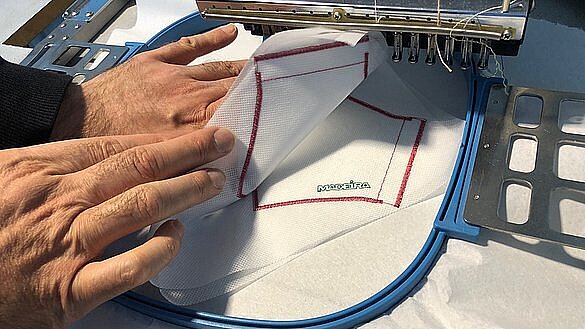
How will the embroidered textiles be processed during cleaning and for design special effects?
The endurance of polyester threads is well known. They can withstand industrial cleaning procedures, heavy-duty detergents, bleaching and stonewashing. Viscose threads, due to their natural raw materials, allow the use of standard detergents that do not contain bleaching agents. However, both threads can withstand high washing temperatures of 95 °C and viscose has a better resistance to high ironing temperatures.
Because of their robustness, polyester threads are often the best choice for uniforms, workwear, bedding, children’s clothing, towels, white textiles, outerwear, swimsuits, jeans with a worn look and other products that must be bleached, or need to withstand harsh chemicals or commercial laundering. Viscose is also suitable for corporate fashion, but only when no bleaching is necessary. However, this is often not possible for colourful materials anyway.
Tip: Madeira Polyneon embroidery threads have a superior resistance to chlorine, and denim wash treatments are possible.
What might polyester and rayon threads have in common?
When deciding for a certain brand, it is always recommended to check the general features as well, which are indicators for your thread’s quality. You can find the main points you should examine below, exemplified with the Classic viscose and Polyneon polyester machine embroidery threads from Madeira.
Are the threads certified?
Classic and Polyneon have obtained the STANDARD 100 by OEKO-TEX®, product class I, which means they are free of harmful substances and are even safe to use for infant items. Additionally, they are produced in ISO 9001:2015 certified factories.
What choices of shades do you have?
With a standard range of over 400 plain shades and multicolours for top threads, matching references to Pantone colours and listings in many digitising programmes, you have plenty of choices for various projects. You will easily find the exact nuances needed, be efficient and able to reproduce a design again at any time. The colour consistency between dye lots is ensured by strict quality controls.
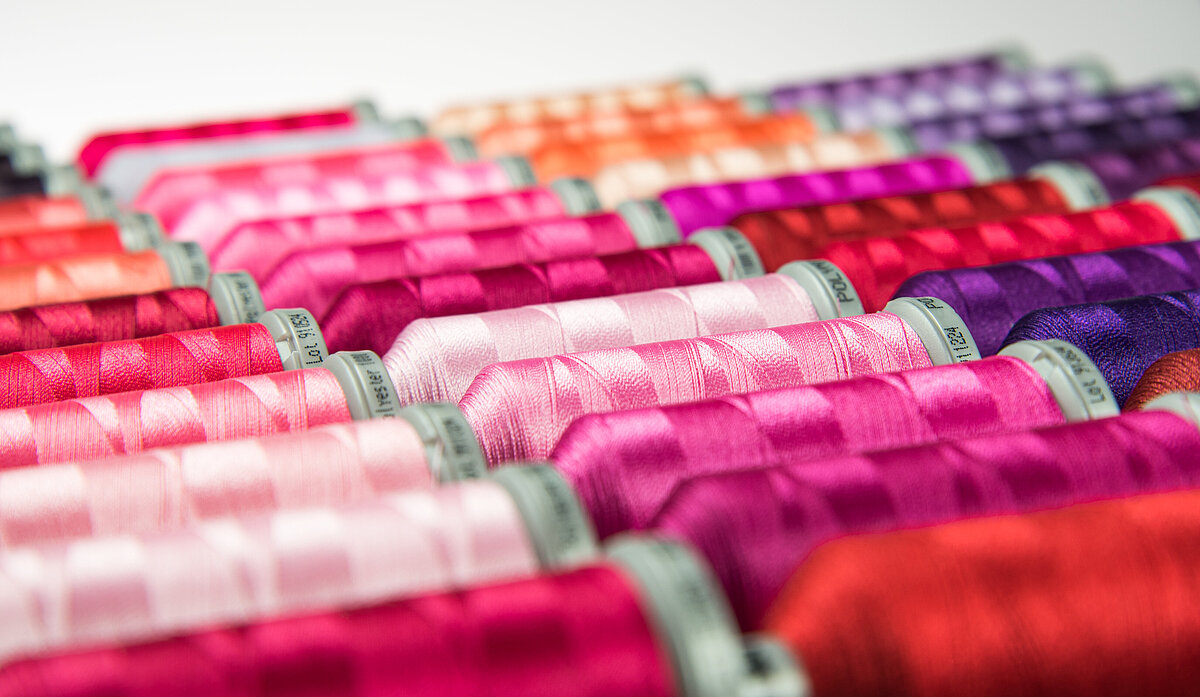
Do you have a good choice of various thicknesses?
Besides the standard 40 weight, which works interchangeably for the two threads with the same needle size and digitising, it is also important to have a choice of thicknesses.
The thinner Classic and Polyneon threads of weight 60 allow you to create clear details and small letters, realistic embroideries using shading techniques, or to work on very delicate fabrics. The super-fine threads, such as Polyneon 75, are suited for fine filigree work, attaching sequins, or very small elements in designs. The thicker Classic 30 covers large surfaces and fills spaces by using fewer stitches and thread, as a lower stitch density is required. It is also suitable for thicker fabrics.
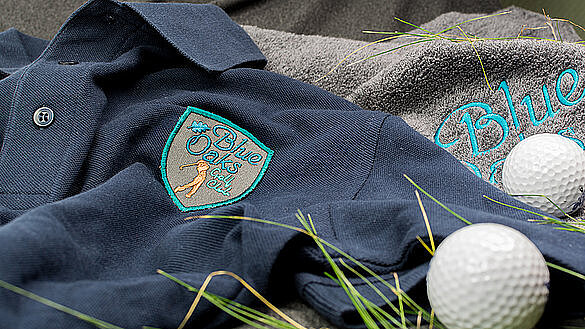
Are the threads suitable for your needs and easy to process?
Some thicknesses are offered on both large and mini cones. This allows for efficient management of your inventory, as you need more thread for the most-used shades and less for the ones you use seldom or just for some accents in designs. Trouble-free running at high speeds on your embroidery machine should also be possible.
What kind of appearance do you desire?
Even if most viscose and polyester embroidery threads are shiny, they reflect the light differently. Depending on the design and digitising, this might be more or less obvious.
Madeira also offers a matte look, which is provided by the innovative Frosted Matt polyester thread. It offers a clean, natural appearance combined with the strength of polyester.
